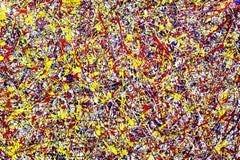Abstract Expressionist Interior Paintings
2010s Abstract Expressionist Interior Paintings
Acrylic
2010s Abstract Expressionist Interior Paintings
Acrylic
21st Century and Contemporary Abstract Expressionist Interior Paintings
Enamel
2010s Abstract Expressionist Interior Paintings
Acrylic Polymer, Acrylic
1960s Abstract Expressionist Interior Paintings
Canvas, Oil
2010s Abstract Expressionist Interior Paintings
Acrylic Polymer, Acrylic
21st Century and Contemporary Abstract Expressionist Interior Paintings
Enamel
2010s Abstract Expressionist Interior Paintings
Acrylic Polymer, Acrylic
Late 20th Century Abstract Expressionist Interior Paintings
Oil, Paper
2010s Abstract Expressionist Interior Paintings
Acrylic Polymer, Acrylic
20th Century Abstract Expressionist Interior Paintings
Oil, Canvas
2010s Abstract Expressionist Interior Paintings
Acrylic Polymer, Acrylic
1970s Abstract Expressionist Interior Paintings
Acrylic
2010s Abstract Expressionist Interior Paintings
Canvas, Acrylic
2010s Abstract Expressionist Interior Paintings
Acrylic
2010s Abstract Expressionist Interior Paintings
Acrylic
1950s Abstract Expressionist Interior Paintings
Oil
1970s Abstract Expressionist Interior Paintings
Acrylic
2010s Abstract Expressionist Interior Paintings
Coffee, Acrylic, Canvas
2010s Abstract Expressionist Interior Paintings
Acrylic Polymer, Acrylic
2010s Abstract Expressionist Interior Paintings
Acrylic Polymer, Acrylic
2010s Abstract Expressionist Interior Paintings
Acrylic
2010s Abstract Expressionist Interior Paintings
Acrylic, Paper
2010s Abstract Expressionist Interior Paintings
Mixed Media, Acrylic
2010s Abstract Expressionist Interior Paintings
Acrylic
2010s Abstract Expressionist Interior Paintings
Acrylic Polymer, Acrylic
Artist Comments
Artist Stanislav Sidorov presents an expressionist overhead view of Meissen Germany as part of his Cityscape series. The scene boasts old European architecture and stands beautifully in vibrant colors. Blue gusts of wind blow over the red roofs of the houses on a fantastic autumn day. Stanislav paints with a palette knife for a sharp application of structure and color.
About the Artist
Stanislav Sidorov saturates his canvas with the expressive color characteristic of the Russian...
21st Century and Contemporary Abstract Expressionist Interior Paintings
Oil
2010s Abstract Expressionist Interior Paintings
Acrylic, Canvas
2010s Abstract Expressionist Interior Paintings
Acrylic Polymer, Acrylic
2010s Abstract Expressionist Interior Paintings
Acrylic Polymer, Acrylic
2010s Abstract Expressionist Interior Paintings
Marble
2010s Abstract Expressionist Interior Paintings
Acrylic Polymer, Acrylic
2010s Abstract Expressionist Interior Paintings
Acrylic Polymer, Acrylic
2010s Abstract Expressionist Interior Paintings
Acrylic Polymer, Acrylic
1990s Abstract Expressionist Interior Paintings
Glue, Acrylic Polymer, Varnish, Oil, Acrylic
2010s Abstract Expressionist Interior Paintings
Acrylic Polymer, Acrylic
Artist Comments
A traditional farmstead basks in the bright winter day in artist Robert Hofherr's expressionist piece. He emphasizes painterly strokes and bold hues, drawing in...
21st Century and Contemporary Abstract Expressionist Interior Paintings
Acrylic
2010s Abstract Expressionist Interior Paintings
Acrylic Polymer, Acrylic
2010s Abstract Expressionist Interior Paintings
Acrylic Polymer, Acrylic
2010s Abstract Expressionist Interior Paintings
Acrylic Polymer, Acrylic
2010s Abstract Expressionist Interior Paintings
Acrylic Polymer, Acrylic
2010s Abstract Expressionist Interior Paintings
Acrylic Polymer, Acrylic
1940s Abstract Expressionist Interior Paintings
Oil
2010s Abstract Expressionist Interior Paintings
Mixed Media, Acrylic
1960s Abstract Expressionist Interior Paintings
Acrylic
1960s Abstract Expressionist Interior Paintings
Oil
1950s Abstract Expressionist Interior Paintings
Oil
2010s Abstract Expressionist Interior Paintings
Canvas, Oil
21st Century and Contemporary Abstract Expressionist Interior Paintings
Canvas, Acrylic
2010s Abstract Expressionist Interior Paintings
Marble, Sandstone
1960s Abstract Expressionist Interior Paintings
Oil, Canvas
2010s Abstract Expressionist Interior Paintings
Marble
2010s Abstract Expressionist Interior Paintings
Marble
2010s Abstract Expressionist Interior Paintings
Marble, Sandstone
2010s Abstract Expressionist Interior Paintings
Marble
21st Century and Contemporary Abstract Expressionist Interior Paintings
Acrylic, Board
1960s Abstract Expressionist Interior Paintings
Canvas, Oil
21st Century and Contemporary Abstract Expressionist Interior Paintings
Canvas, Oil



